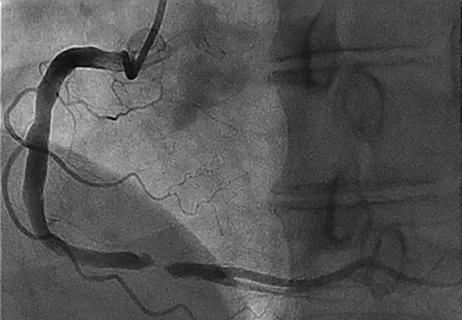How Cleveland Clinic supported an alliance hospital to improve early extubation practices

Prolonged ventilation has been identified by the Society of Thoracic Surgeons (STS) as a key quality measure following cardiac surgery due to its incidence, affecting up to 22.7% of patients (J Clin Med. 2023;12[2]:497), and the impact it has on postsurgical recovery and quality metrics. Furthermore, prolonged ventilation beyond three days has reportedly been associated with in-hospital mortality rates as high as 25% to 50%.
Advertisement
Cleveland Clinic is a non-profit academic medical center. Advertising on our site helps support our mission. We do not endorse non-Cleveland Clinic products or services. Policy
Weaning from mechanical ventilation following cardiac surgery may be challenging for some patients due to several factors, such as preexisting lung disease, heart failure, severe obesity and advanced age. However, the timing of extubation plays a critical role in determining surgical outcomes. During the immediate postoperative period, prioritizing the return of spontaneous breathing for patients and timely extubation are key clinical milestones that should occur within 24 hours of surgery. Prolonged ventilation (intubation) is defined by the STS as total intubation time of more than 24 hours following isolated coronary artery bypass graft surgery (CABG), measured from the time of exiting the OR to extubation.
Early extubation is a priority since it reduces length of stay in the cardiovascular intensive care unit and the hospital and lowers patients’ risk of developing pneumonia and other infectious complications, as well as reducing the cost of care.
Prolonged ventilation is one of many metrics for which Cleveland Clinic’s Heart, Vascular & Thoracic Institute Advisory Services and Affiliate Program (ASAP) offers assessment and proactive solutions to hospitals domestically and internationally.
St. Luke’s Hospital, a 493-bed hospital located west of St. Louis in Chesterfield, Missouri, entered an alliance relationship with Cleveland Clinic’s Heart, Vascular & Thoracic Institute in 2016. During Cleveland Clinic’s initial comprehensive service line assessment, which included postoperative critical care management, it was apparent that St. Luke’s cardiovascular service line prioritizes patient safety and is dedicated to achieving quality outcomes. Participation in the STS Adult Cardiac Surgery Database has helped prioritize the hospital’s quality improvement efforts.
Advertisement
One year following affiliation, the St. Luke’s cardiac surgery team had achieved a post-CABG prolonged ventilation rate that was better than the STS national average (5.5% vs. 5.73%). However, the clinical providers and administrators were confident they could improve their performance on this metric, and they invited input from Cleveland Clinic to assist.
Cleveland Clinic’s ASAP team conducted an in-depth evaluation of St. Luke’s outcomes, a thorough review of individual cases, and a comprehensive review of clinical practices, policies and protocols as well as staffing and workflows. Following the assessment, a detailed report of findings and recommendations was provided to St. Luke’s. The ASAP team then worked closely in collaboration with the St. Luke’s team to implement recommended changes and track and trend outcomes.
Several clinical practice changes were recommended and implemented, including:
The changes were associated with swift improvement in St. Luke’s rate of prolonged ventilation in post-CABG patients, which declined from 5.5% in 2017 to less than 3% in 2018.
Over the course of St. Luke’s alliance with Cleveland Clinic, additional clinical and program changes were implemented to optimize and sustain postoperative critical care practices. These include changes in:
In collaboration with Cleveland Clinic’s recommendations, St. Luke’s commitment to implementing best practice strategies to improve prolonged ventilation performance metrics has yielded sustained improvement, as shown in the figure.
Advertisement

St. Luke’s was able to leverage improvement in preventing prolonged ventilation — along with optimization of other clinical processes — to achieve a three-star CABG composite quality score rating from STS in 2018, and it has sustained this top rating. These improvements cemented St. Luke’s status as one of the nation’s top-performing cardiac surgery programs for CABG, since only 20% of STS registry participants receive a three-star rating for isolated CABG (see table).

To support this sustained success, Cleveland Clinic and St. Luke’s continue their collaboration on quality, data registries and clinical best practices through routine meetings involving physicians, nursing leaders and quality improvement team members from both hospitals. Further value is provided through annual site visits for clinical observation, evaluation of real-time care processes, and sharing of care protocols and staff education resources.
“Since our collaboration with Cleveland Clinic began in January 2016, we have seen additional improvements in quality and have sustained great process changes with their support,” says Sue Scego, RN, BSN, MHA, Executive Director of St. Luke’s Heart & Vascular Institute. “An example is our continued three-star STS rating in CABG, the highest possible rating for surgical excellence and patient outcomes. We were able to implement additional evidence-based process changes on a large scale to make meaningful progress in prolonged ventilation, which has enabled us to outperform other programs in this category.”
Advertisement
“Early extubation following heart surgery is an important but difficult metric to address,” notes Edward Soltesz, MD, MPH, Director of Cardiac Surgery Affiliate Programs at Cleveland Clinic. “It takes perioperative planning, standardization of care protocols and real-time intervention from bedside caregivers. Furthermore, sustaining a three-star STS rating year over year requires tremendous commitment, multidisciplinary decision-making and dedication to quality. We congratulate the St. Luke’s cardiac surgery team on the sustained high-level performance of their program.”
For information on affiliation or alliance opportunities with Cleveland Clinic’s Heart, Vascular & Thoracic Institute, email Amanda Lesesky at leseska@ccf.org.
Advertisement
Advertisement

Cleveland Clinic-pioneered repair technique restores a 61-year-old to energetic activity

Study indicates lower in-hospital mortality and better long-term survival

Why and how we’re using robotic assistance for qualifying CABG candidates

The case for a thoughtful approach to CTO and minimally invasive options for CABG

Weakened endorsements in settings of normal EF and mild-moderate LV dysfunction may cause harm

Findings undercut perceptions of radial artery as second conduit of choice

How two Cleveland Clinic alliance hospitals systematically elevated echo standards

How our HVTI Advisory Services team facilitated swift improvements for an allied health organization